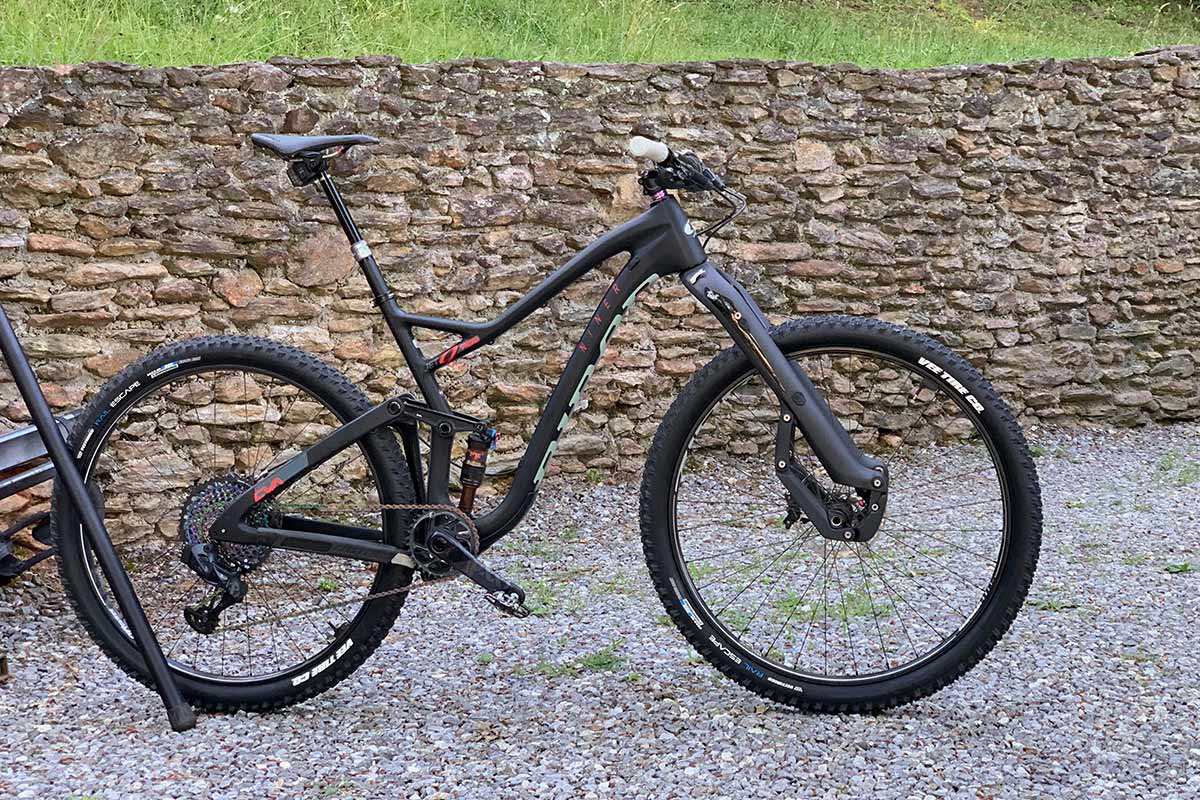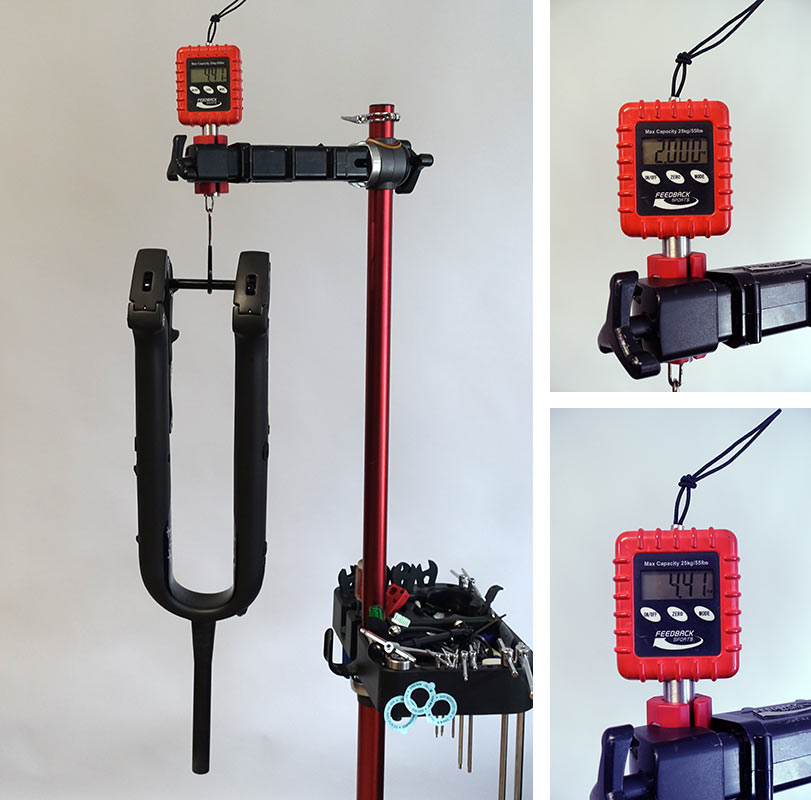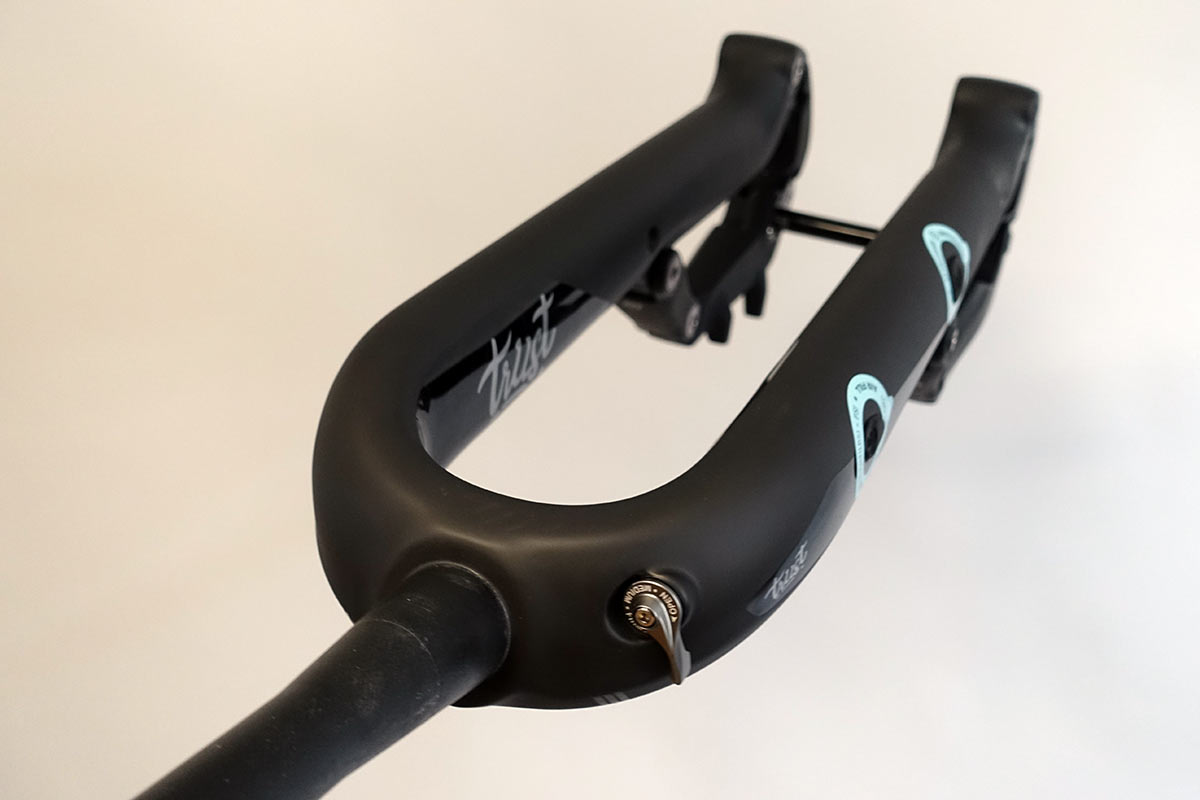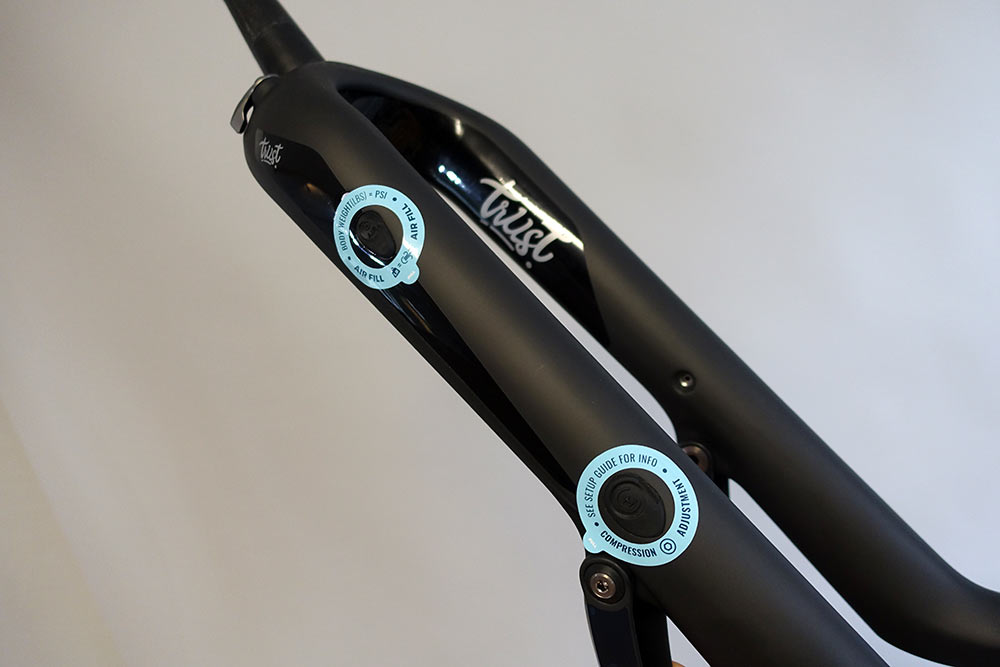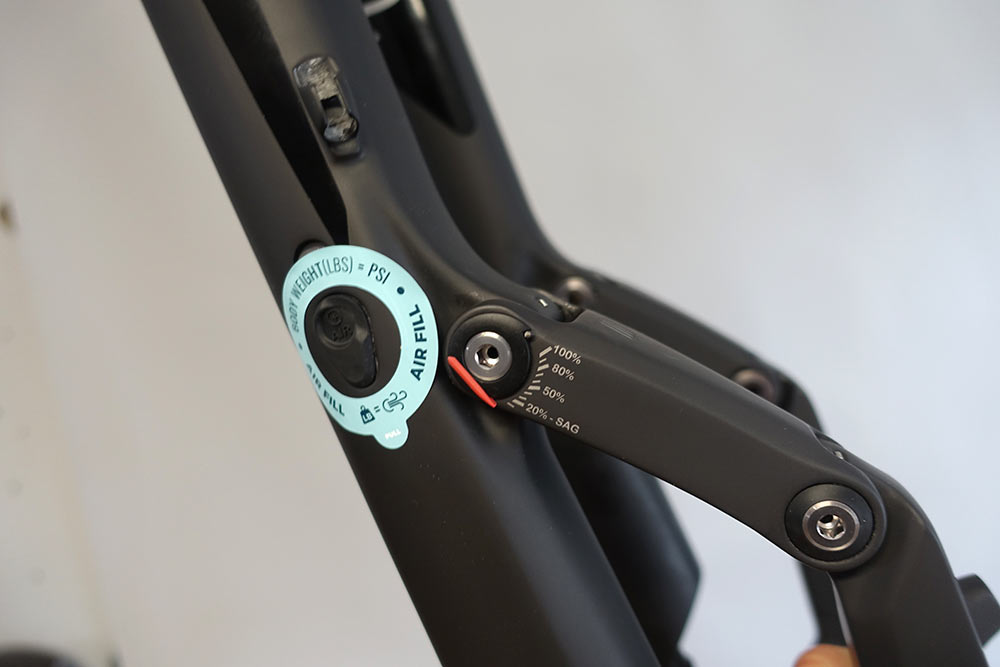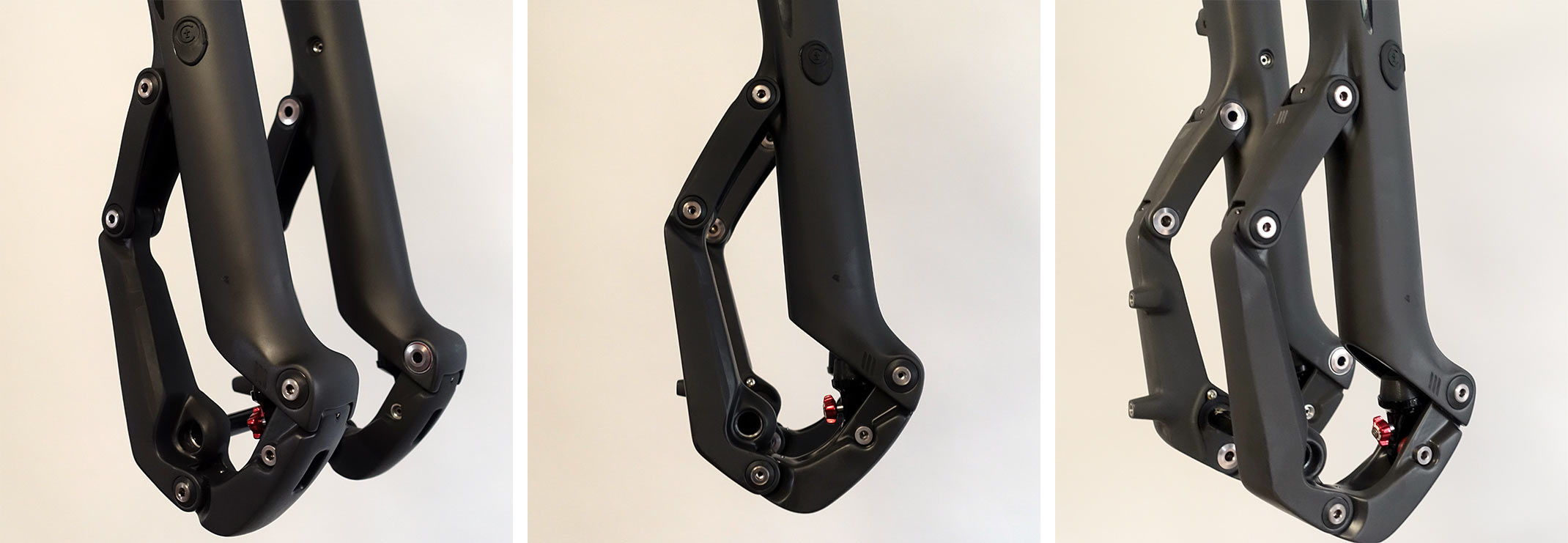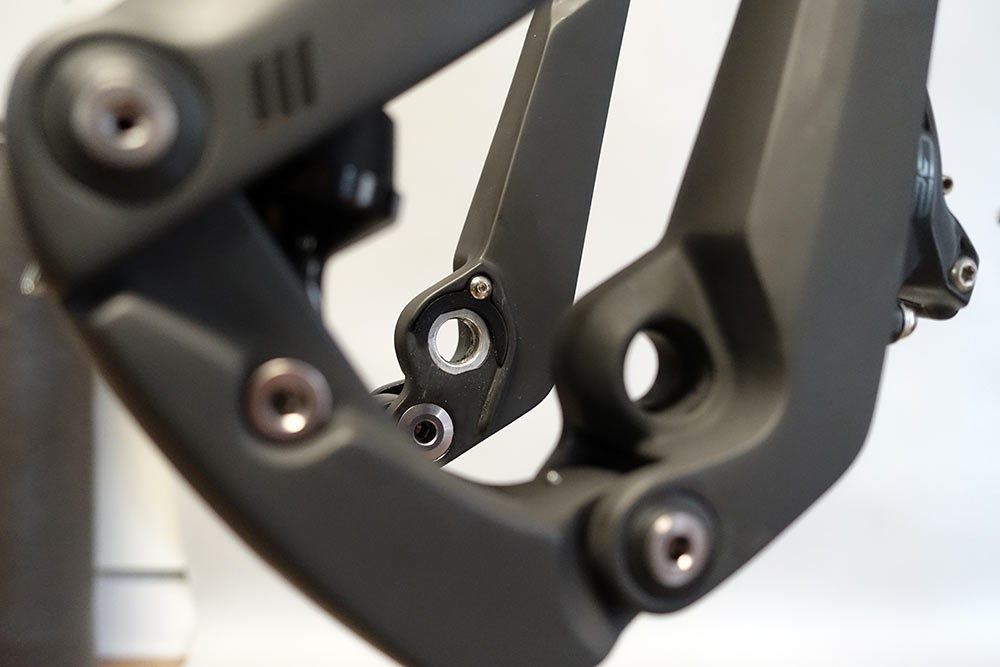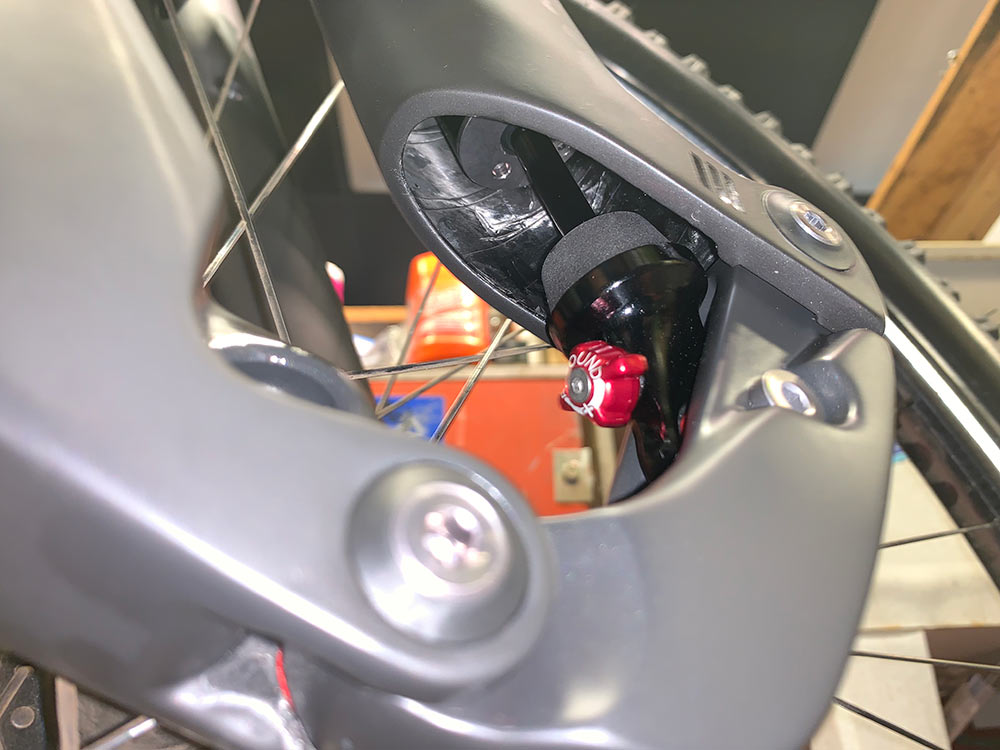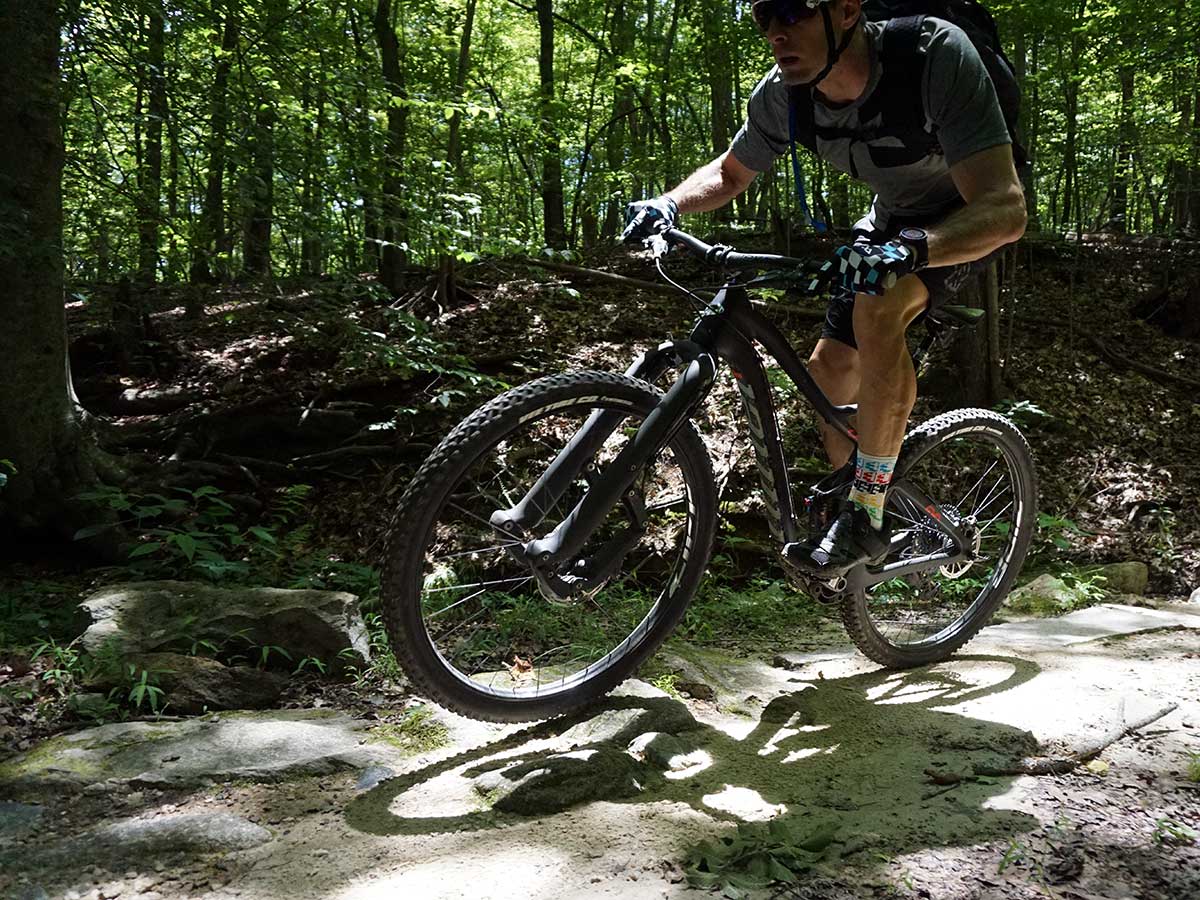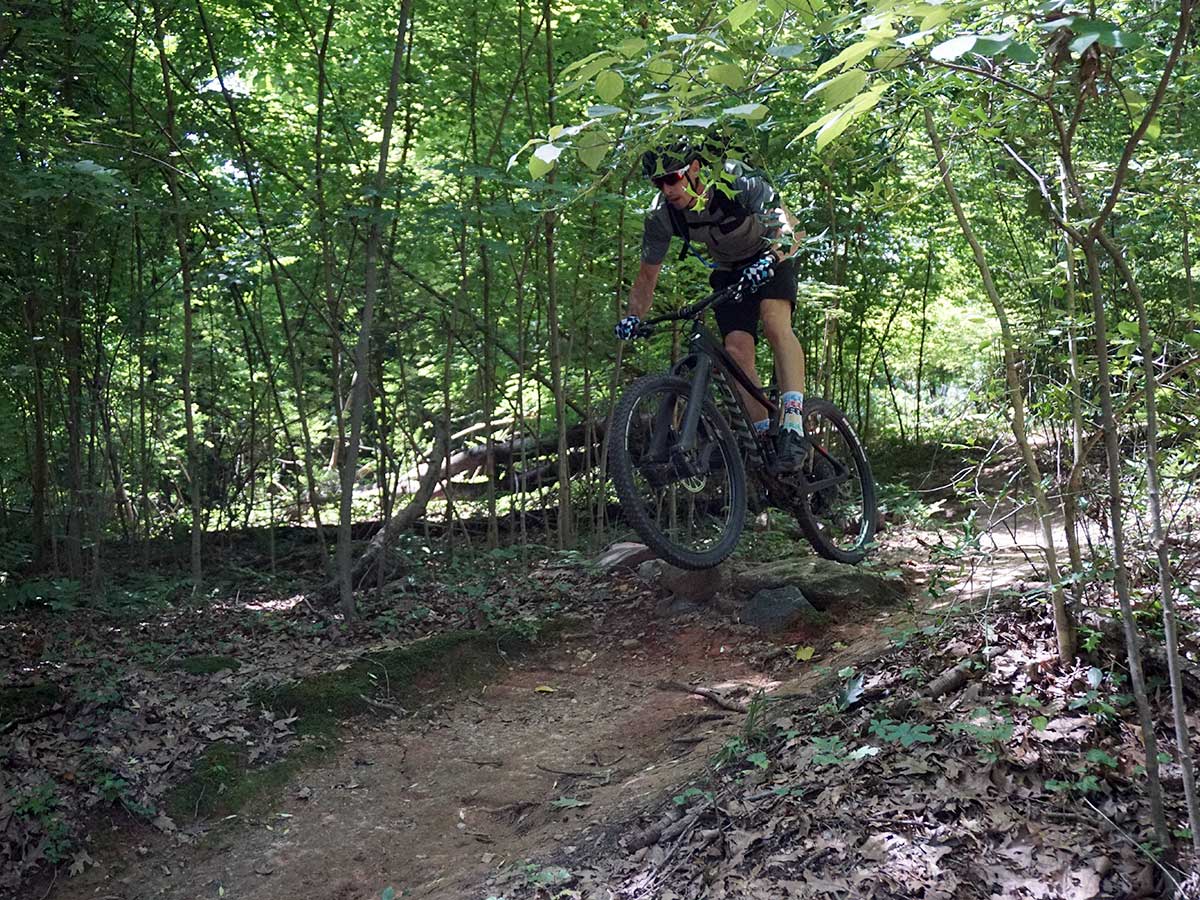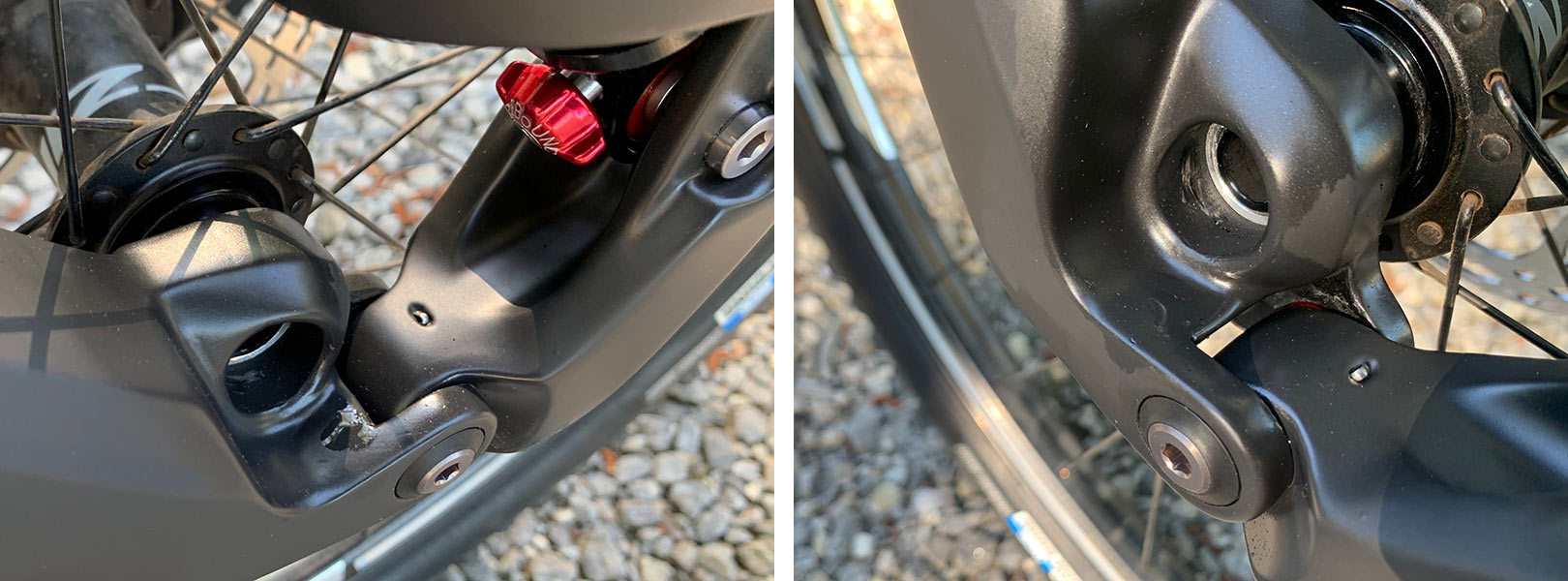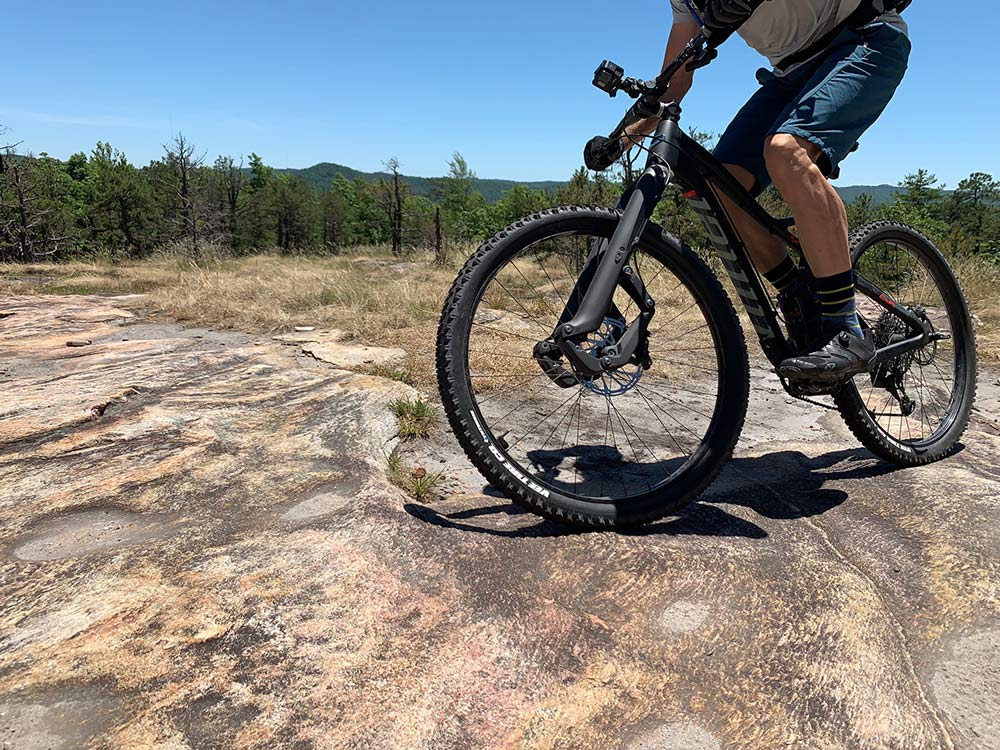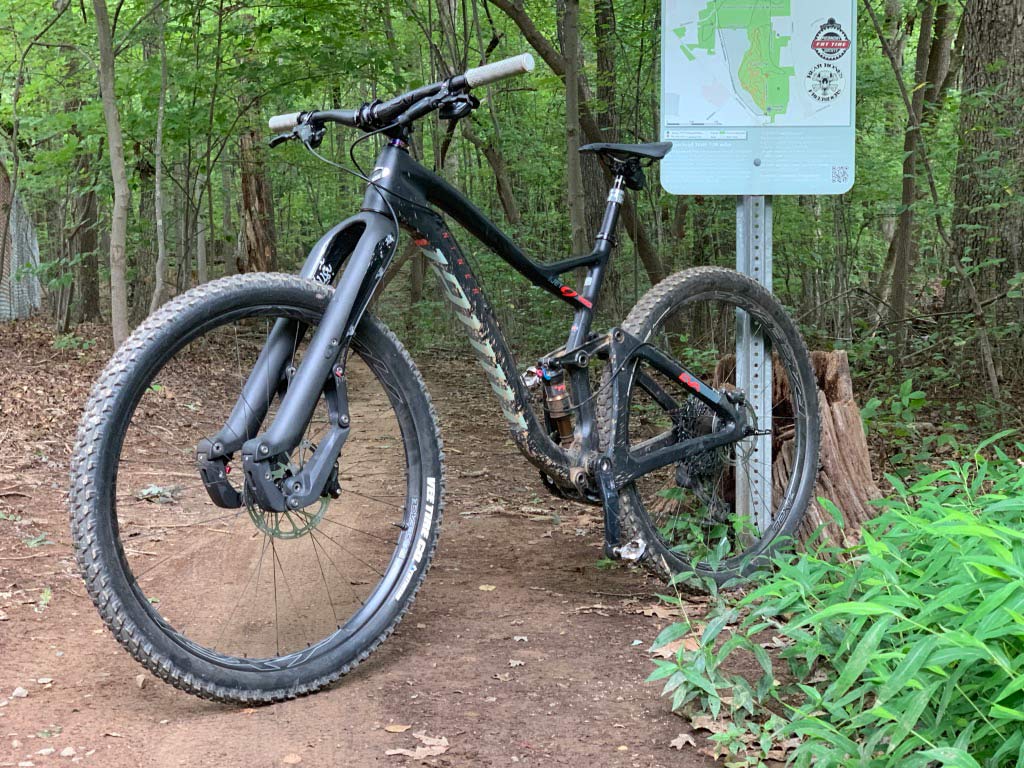Trust Performance’s The Message suspension fork came outta left field, launching a new way of thinking about mountain bike forks. More specifically, a new way of controlling the steering response by maintaining a constant trail figure no matter where the fork is in the travel. Compared to traditional forks, the trailing link design allows them to change the axle path in two dimensions.
Rather than just going straight up and down, the axle moves rearward as you hit a bump, keeping trail the same. In theory, this maintains consistent handling characteristics. But, how does that 130mm of shaped travel really work out on the trail?
The Message actual weights & box contents
There’s nothing about The Message that isn’t extremely well thought out. The packaging is premium, as are the included accessories, instruction manual and more. It comes with its own shock pump that has an extended nozzle (you’ll see why in a minute), torque wrench, volume spacers (called Huck Pucks), expanding steerer cap, and a pop-out sheet of extras.
What’s cool about the extras is that they’re not even all for The Message…there are bits and pieces you can use on other parts of your bike to better manage cables and hoses and other tidbits. It’s a nice addition that shows they’re really thinking about the entire ride experience.
The fork with uncut steerer comes in at 2kg (4.41lb). That’s on the heavier side of traditional forks in the same travel range, but there’s a lot more going on here. In addition to the whole linkage structure, it houses two air springs…one in each leg. And those legs are huge, providing a very stiff structure to keep everything moving up and down smoothly.
Tech specs & design features
The whole fork is carbon fiber, with metal pivot axles and bearings, plus pins to keep everything in place.
On the right leg are an air spring valve (top) and two compression damping knobs (bottom). All setting points come with stickers to highlight the areas where you’ll need to adjust something.
Airing (or maybe erring) up
The left leg has the other air spring, and a sag meter. What’s really cool about the sag meter is that it stays in position at the deepest compression. During setup, this helps you set sag with out a friend (just push it down once you’re in position). On the trail, it makes it really clear how much travel you’re getting, so you know if you need to adjust anything.
Trust suggests starting with air pressure that matches your body weight in psi, but their PR rep suggested that we could run it up to 10% lower than that. And that’s where it gets tricky to form impressions, because that difference in pressure creates two very different riding impressions.
I weigh 187lb before kitting up, but I ran 170psi (on each side, you have to run the same pressure in both air springs) and still didn’t get through all of the travel even on some rough, rocky trails that easily could have outgunned this fork. The majority of this test, and 100% of my video review, is based on that setup.
But, I wanted to also test it at the manufacturer’s suggested setting, so I pumped it up to 190psi (me plus shoes, clothing, etc.) and headed back out on the trail. Keep reading to see how it went…but first, a bit more about the fork’s features.
The air spring caps are tooled, required a hex wrench to remove them since you can’t get your fingers in there. The medium and high speed compression settings allow you to set the compression rate to your liking for two of the settings offered by the switch on the top of that leg. This is another nice touch not found on other forks…at least not with this level of range.
The third option on the top switch is firm, essentially a lockout with a bit of give.
The fork will worth with 15×110 axles using the bolt-on clips shown here. Remove them to run Rockshox Torque Cap front hubs.
Below the air springs are bottom out bumpers, and the rebound knob is on the left side.
How does The Message compare to regular forks?
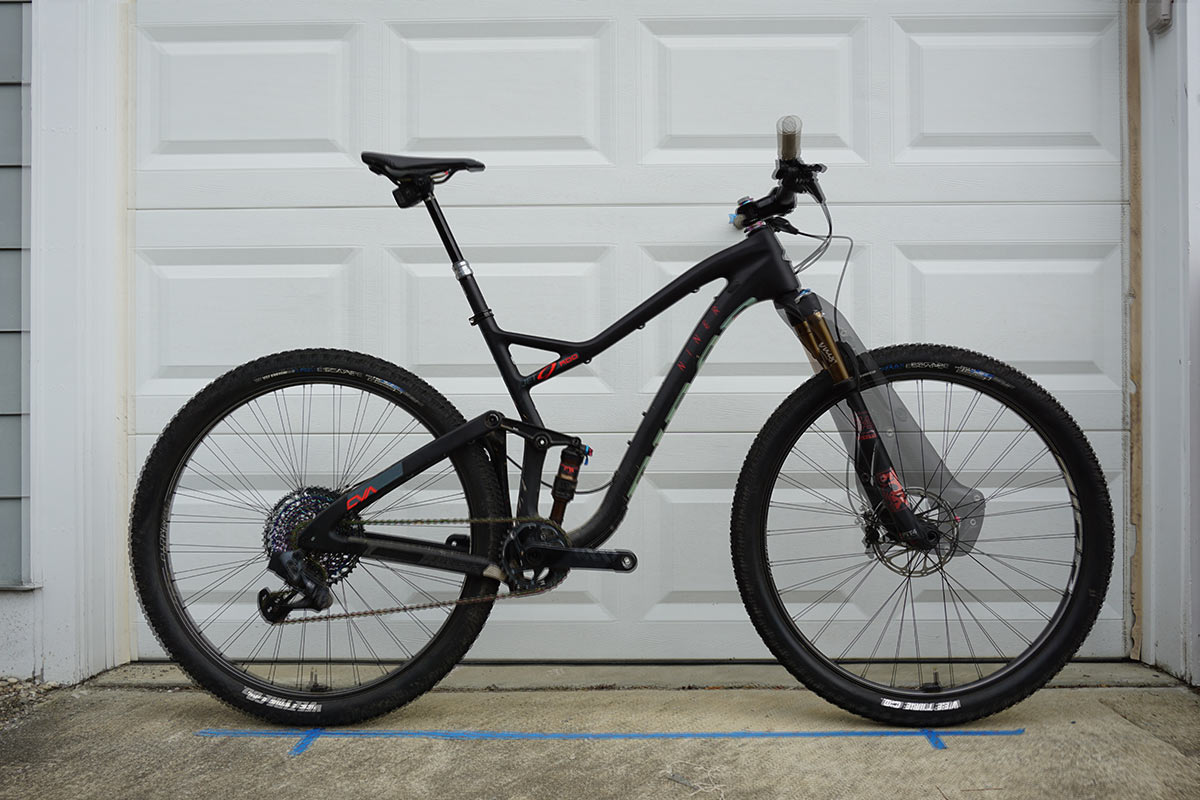
If you look at the side profile of my bike in the top image of this post, it just looks like the fork sticks way, waaaay out in front. So I was really surprised to see that it puts the front axle in virtually the same exact starting point as the 130mm Fox 34 that comes on the Niner JET9 RDO. Watch the video below to see them overlaid in all positions.
They also end up a similar position when fully compressed, shown above on a 135mm tall block of wood, and flat on the ground, both full compressed to bottom out. Measurements with each fork were:
| Fox 34 | Message | |
| Wheelbase | 1190mm | 1190mm |
| Axle-to-Crown | 537mm | 535mm |
| Ground-to-Headset* | 832mm | 830mm |
*vertical measurement from the ground to the rear of the lower headset cup
The similarities would suggest the bike should handle the same with each fork, but that would be comparing apples to apples. That’s where The Message strikes off on its own to change the way fork travel affects steering response…
Trust Message Ride Review
For the most technical parts of our review, check this video for slow motion action, ride footage, visual comparison between the Trust Message and a standard telescoping fork, caster angle analysis, and more. Just keep in mind that this video was made before I pumped the fork’s air spring up to body-weight-matching psi.
Testing with my preferred, lower PSI setting
From a pure suspension performance standpoint, The Message seemed to absorb bumps incredibly well. From the smaller stuff around our local trails (pictures) to the rock gardens and more aggressive stuff in Dupont State Forest (video), it didn’t feel harsh. It’s performs especially well at speed, too, coasting through repetitive hits when you’re going fast. The level of adjustability makes me think most riders will be able to find a happy place between support and cushioning.
I left the fork in its Open setting most of the time, which is how I run all of my suspension most of the time. Because I like suspension. The Message felt supportive during climbing and hard pedaling, with just a bit of motion under standing efforts…but less than with traditional telescoping forks. It also seemed supportive when landing jumps, but gets out of the way quickly when hitting something big.
From a construction standpoint, it seems well built, though those are a lot of linkage points to wear out. We haven’t had it long enough to test how well it’ll hold up to years of riding. The only maintenance concern I have is that there’s a constant bit of oil coating the lower section. There was more immediately after the first ride, which Trust’s rep told us was normal. But even after wiping that off, there’s a slight sheen that seems to renew itself.
To be fair, if you hang a traditional fork upside down, it, too, will allow oil to seep through the seals and start to coat the crown…it’s just gravity at work. But still not something you want to see. Fortunately, it’s confined to the drive side, away from the front brake.
Here’s where things get weird
The real question is, how does it affect handling. If the suspension action is on par with other top-end forks, that’s what’s going to separate The Message from its competition. And, yes, it’s definitely different.
Because the wheel moves backward upon impact, it’s effectively shortening the wheelbase as you ride. So, while trail theoretically stays the same, the wheelbase is changing…as is your fore-aft weight balance. Which, to me, means there are competing forces at play. On the one hand, a consistently longer trail means the bike should remain stable. On the other, the shorter wheelbase means the bike will turn quicker. The effect is, well, different.
With this psi and set up, it changes how you drive the bike into fast corners, and it changed the handling in ways I didn’t care for. In a straight line and on rough stuff, I’d take it all day long. But decades of muscle memory driving regular forks around the turns made this one feel a little awkward.
It’s like a whole new fork
Up until this point, I’d intentionally ignored any other review or 3rd party opinions on the fork. I wanted my opinion to be solely based on my own observations, however, Zach had heard that other riders were having a very different experience than mine…that the fork was harsh, but handled really well. Could this really be a Jekyll & Hyde scenario?
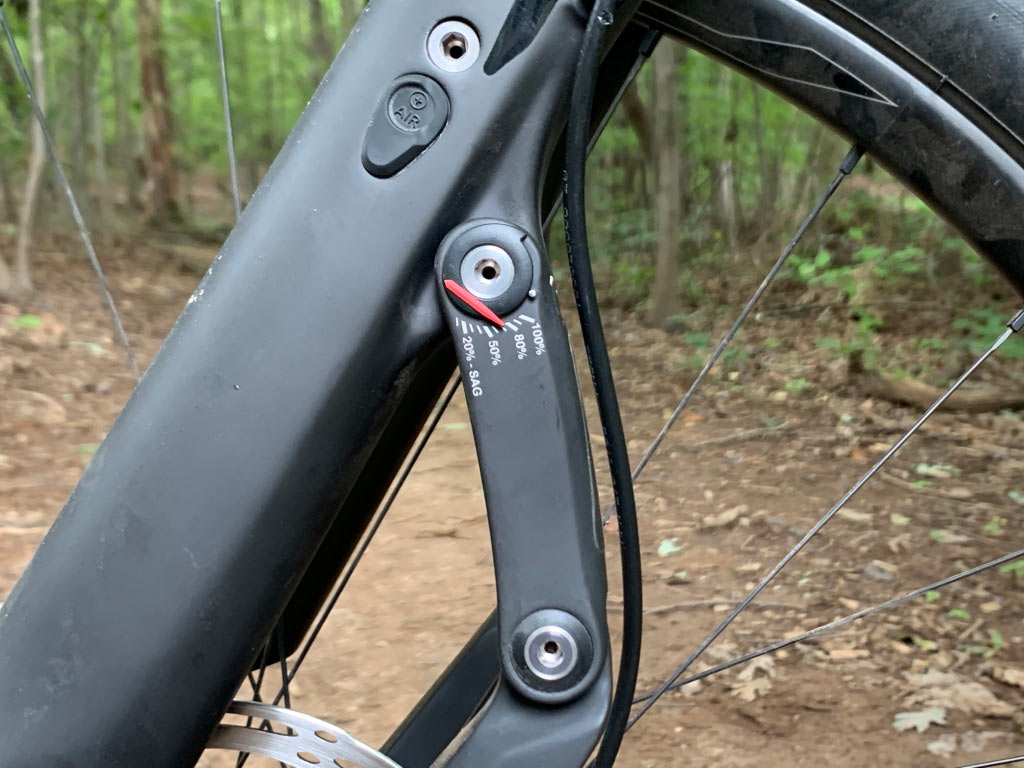
Well, yes.
The fork’s character changed dramatically. Handling was far better in every situation. From berms and high speed corners to the tighter slow speed stuff, the fork and entire bike was more predictable. Which would make sense if it’s not moving as deep into its travel, because (at least according my theory posited above), the wheelbase wouldn’t be changing as much. And it’s not moving through its travel as much. During a similar ride as earlier testing, I was hard pressed to get through 70% of the travel, despite landing jumps and trying to hit every root and rock at speed while firmly planted on the saddle and weighting the handlebars.
The downside to the better handling was, yep, a harsher ride. Which, at least according to Trust’s team, isn’t necessarily a bad thing. Their design is focused on improving “stability, traction, and control”, and it does this by reducing fore-aft flex during impact, and reducing lateral flex during cornering. And, of course, by keeping that trail figure constant.

But what does it mean?
I spoke with their marketing manager, Ben Craner, to see what their intent was with The Message. He said frame manufacturers were asking Dave Weagle (Trust’s lead suspension engineer and co-founder) to design frames with lower BB’s and slacker head angles in order to make a bike handle better, and be more stable. And he could have done that, but at some point, the bike becomes unrideable. So he started looking at other ways to skin that cat. So, as Craner put it: “Do you want the cushy ride of a Buick? Or do you want the razor-sharp, track-inspired handling of a Porsche?” I’d be hard pressed to put it better than that.
They say people who want to ride really hard will like it. It’s tuned for that type of riding. And I’d agree. The harder I pushed it, the smoother it felt. It does seem to stay pretty well glued to the ground. There’s no noticeable flex during hard cornering. But, personally, I like a softer ride. Fatigue is a big detriment to long-distance performance, and the harder hits would wear out my hands, wrists and arms more quickly.
Which means, maybe this fork is right for you. Maybe it’s not. It kinda depends on what you’re going for. The technology story here is cool. It’s different, and whether that difference justifies the $2k price is up to you.
Should you try it? Absolutely. Because you’re different than me, and they offer a 30 day guarantee so you can try it risk free on your own bike and your own trails. Or check out their dealer locator to find a bike shop near you that has one to demo.
